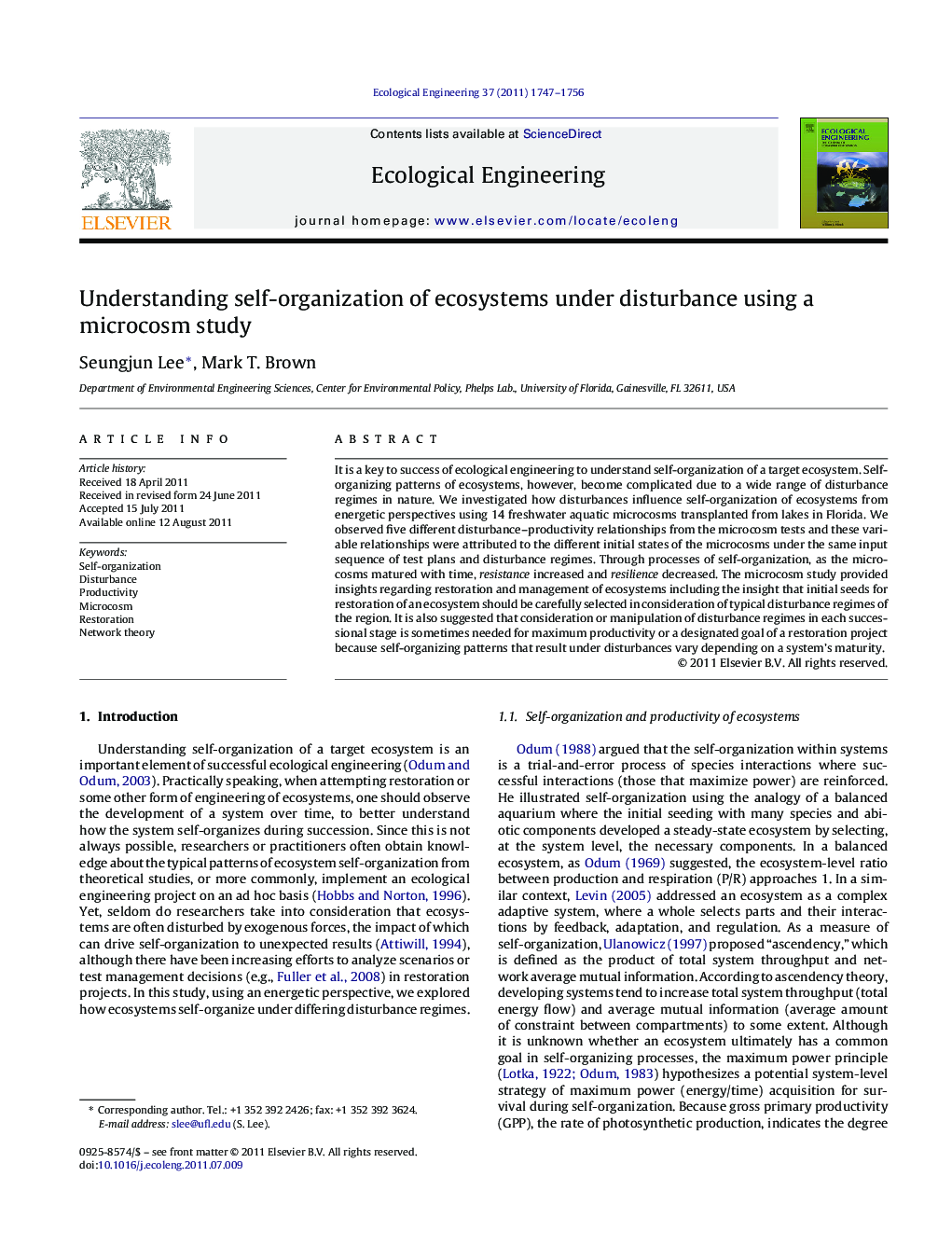| Article ID | Journal | Published Year | Pages | File Type |
|---|---|---|---|---|
| 4390125 | Ecological Engineering | 2011 | 10 Pages |
It is a key to success of ecological engineering to understand self-organization of a target ecosystem. Self-organizing patterns of ecosystems, however, become complicated due to a wide range of disturbance regimes in nature. We investigated how disturbances influence self-organization of ecosystems from energetic perspectives using 14 freshwater aquatic microcosms transplanted from lakes in Florida. We observed five different disturbance–productivity relationships from the microcosm tests and these variable relationships were attributed to the different initial states of the microcosms under the same input sequence of test plans and disturbance regimes. Through processes of self-organization, as the microcosms matured with time, resistance increased and resilience decreased. The microcosm study provided insights regarding restoration and management of ecosystems including the insight that initial seeds for restoration of an ecosystem should be carefully selected in consideration of typical disturbance regimes of the region. It is also suggested that consideration or manipulation of disturbance regimes in each successional stage is sometimes needed for maximum productivity or a designated goal of a restoration project because self-organizing patterns that result under disturbances vary depending on a system's maturity.
